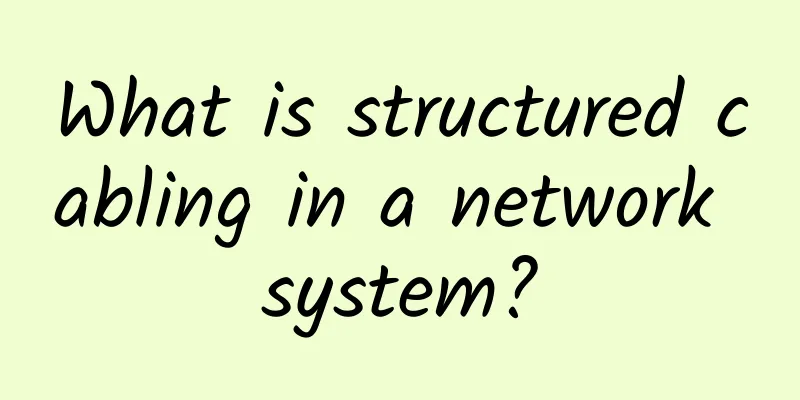5G will change the world. What does it mean for regulations?

|
The Fourth Industrial Revolution will see the lines between the physical, digital and biological realms become increasingly blurred as advanced technologies and high-speed wireless connections merge. The resulting impact on our systems will change the way we produce, manage and govern ourselves and the world. 5G technology offers wireless communication speeds up to 10 times faster than previous generations, comparable to fiber-optic cable speeds, and is the first mobile technology capable of extending broadband wireless service to connected devices. By 2025, an estimated 25 billion connected Internet of Things (IoT) devices will exist. The race is on to make 5G commercially available everywhere. As a result, we will see fundamental changes in the way we communicate and live. 5G promises to supercharge the Internet of Things, autonomous vehicles, augmented reality (AR), smart cities, smart manufacturing, 3D video, remote healthcare, and regenerative medicine. Each of these and other 5G-enabled applications is likely to change the shape of the legal, risk, and regulatory landscape, and together they will usher in the Fourth Industrial Revolution. While previous industrial revolutions harnessed the power of steam, electricity, and information technology, the Fourth Industrial Revolution will fuse advanced technologies and high-speed wireless connections to blur the boundaries between the physical, digital, and biological realms. The resulting impact on our systems will transform the way we produce, manage, and govern ourselves and the world. The role of 5G in accelerating the Fourth Industrial Revolution 5G supports near real-time network connectivity. Its lower latency and reliability allow for faster transmission of massive data streams even under extreme conditions, and will support a large number of sensors, wearables and devices. As 5G rolls out, artificial intelligence (AI) will become even smarter, communicating between devices and accelerating digital transformation. AI will no longer live solely in the cloud, but will be distributed at the edge or on the IoT devices themselves. In the healthcare industry, for example, 5G will support a huge expansion of preventive and monitoring practices through connected devices, whether wearable or not. Faster speeds and network reliability will allow more sophisticated devices, including implantables, to provide real-time data streams to support remote diagnosis, robotic surgery, and telemedicine. Likewise, manufacturing is expected to be reinvented through AI and IoT tools to improve efficiency, collect data, and predict outcomes. Augmented reality tools will enable technicians to remotely maintain and repair smart factories. Other applications include continuous monitoring of equipment performance, robotic and autonomous production, and predictive analytics. In the autonomous vehicle space, manufacturers are racing to develop the first commercially viable self-driving car. 5G and edge computing are necessary to scan the vehicle’s surroundings and make safe decisions in real time based on that information. Other applications of 5G abound in retail, energy, entertainment, agriculture, financial services, and supply chain management. The possibilities brought about by a 5G-enabled world will herald the Fourth Industrial Revolution and give birth to the Internet of Everything (IoE). Although the IPO and M&A markets experienced a pandemic in the first half of 2020, they are still waiting to reopen, which will revitalize them. It will also drive a whole new wave of investment in 5G-driven enterprises. Venture capitalists are looking for new business models to support 5G network deployment around the world. In the past year alone, in terms of 5G startup investment, Mavenir Networks raised $105.3 million, Affirmed Networks raised $155 million, Altiostar raised $357.5 million, and so on. 5G has unlimited potential, but limited means of implementation For 5G to become an effective service and enabler, significant investments must be made quickly, and legal structures must protect network sharing and use of infrastructure until 5G becomes ubiquitous. The global deployment of 5G will not be immediate or simple. 5G networks require additional spectrum and greater use of small cells, and will have a greater reliance on fiber optic networks. There may be legal challenges in the face of network sharing and infrastructure requirements. Building the infrastructure for 5G will take time. While 5G has been touted as the future of technology for years, only recently has real progress been made in creating 5G-ready cities. Because 5G frequencies travel much shorter distances than current wireless technology, more base stations will be needed. Where will these base stations be installed in our cities? Only once 5G is fully integrated will we be able to benefit from smart homes, artificial intelligence, virtual reality (VR) devices, drones and self-driving cars. While the huge potential of 5G has the power to fundamentally change the way we interact with each other and the world, our laws will have to adapt to these rapid changes. What does this mean for our legal system? As we continue to integrate 5G technology into the IoE, the Fourth Industrial Revolution will raise a host of legal questions: How will we implement and roll out 5G services? Who will have access and when? How will we pay for it? Where will the data go? How will we protect privacy? How will we protect society from authoritarianism? How will we avoid cybercriminals or government-sponsored cyberattacks? Therefore, 5G technology and the resulting Fourth Industrial Revolution will require the legal, risk and regulatory environment to evolve and adapt. There will be no niche regulatory issues with 5G, as every part of the global economy will be impacted. Investors seek to capitalize on the benefits of a connected future while navigating a complex global trade and security landscape. At the same time, governments will seek to begin deployment while reviewing regulatory solutions to privacy, safety, and security concerns. 5G may be the first technology to gain widespread consumer and business adoption. This means that consumer demand will force regulators and laws to achieve equal 5G access for all. In addition to legal issues related to access to 5G, other issues will need to be addressed, such as coordinating the distribution of sensitive consumer data across multiple jurisdictions with different consumer protection laws. Health risks associated with 5G radio frequency frequencies have raised concerns among consumers, as 5G requires a high-density network and a range of local base stations. These concerns may influence local authorities’ attitudes towards planning permission control. Over the past two years, regulators have facilitated negotiations between telecom companies and landowners on the siting of telecom equipment. This has made it economically viable for telecom companies to improve coverage, especially in rural areas. Unless we want continued data inequality, regulation may be needed to ensure equal access. Privacy: 5G brings with it a multitude of privacy concerns that come with increased connectivity. Issues and technology intersect in the smart home. As personal voice-activated assistants become more prevalent, smart homes are becoming more vulnerable to hacking and a loss of privacy. Device Regulation: 5G will bring about the development of innovative devices. These new technologies will almost certainly be regulated by relevant authorities. Inventors will face the challenge of ensuring that new products comply with existing regulations, and lawmakers will have to ensure that regulations remain timely and relevant. Law enforcement: The interaction of law enforcement and 5G also has implications that are likely to increase. As 5G becomes more widespread, law enforcement will undoubtedly gain access to more personal data. We can expect companies to continually update their policies regarding data collection and cooperation with law enforcement. Similarly, we will require new laws to cover law enforcement powers involving personal data when individuals are the subject of criminal investigations. The inevitable revolution 5G is here, and it will drive the Fourth Industrial Revolution. Investors are investing heavily in businesses that are leveraging 5G network growth to transform entire industries, changing the way we interact with each other. 5G will impact law and policy at all levels of government and across every agency around the world. We have only glimpsed what 5G can do, and the demand for legal services in areas such as data protection, health, safety and cybersecurity will continue to grow exponentially. |
>>: SD-WAN is just the first step in WAN automation
Recommend
The story of spectrum: Gigabit is just the beginning
At the end of 4G development, the most advanced m...
How to secure your SDN controller
Managing networks has become increasingly complex...
UFOVPS National Day promotion starts at 30% off, top up 200 yuan and get 20 yuan, Hong Kong CN2/Japan CN2 optional
UFOVPS is currently carrying out a National Day p...
10gbiz: Hong Kong CN2 GIA/Los Angeles CN2 GIA VPS 50% off, starting from $3.44/month
A friend asked about the discounts of 10gbiz this...
September operating data of the three major operators: 5G enters the harvest period after entering the "warming up" mode
Unconsciously, the third quarter of 2020 has come...
5G will be fully rolled out in 2020. Are 5G network and 5G frequency band the same thing?
After the 5G trial commercialization in 2018 and ...
5G network needs to save money by relying on these four key technologies
[[385335]] This article is reprinted from the WeC...
Why is the 4G network speed slowing down now? The Ministry of Industry and Information Technology gave the answer, netizens: It's really realistic
I don't know if you have noticed a significan...
What happens if you apply for 8G memory on a machine with 4GB physical memory?
Hello everyone, I am Xiaolin. This morning I saw ...
Why You Should Avoid Public WiFi
Translator | Li Rui Proofread by Sun Shujuan Ther...
CloudSilk: German AS9929 line 500Mbps large bandwidth starting from 216 yuan/year
A friend of mine was looking for a host with AS99...
Outlook for domestic 5G development in 2021 (Part 3): Opportunities
From the official launch of commercial use in 201...
10 steps to improve application and network performance
If you work in a network operations team, you kno...
What exactly is the “computing power network”?
What is a “computing network”? Let’s get straight...
The fourth largest operator is here and is about to join the battle for 5G users, breaking the three-way competition
As consumers, if we want to receive 5G signals be...









